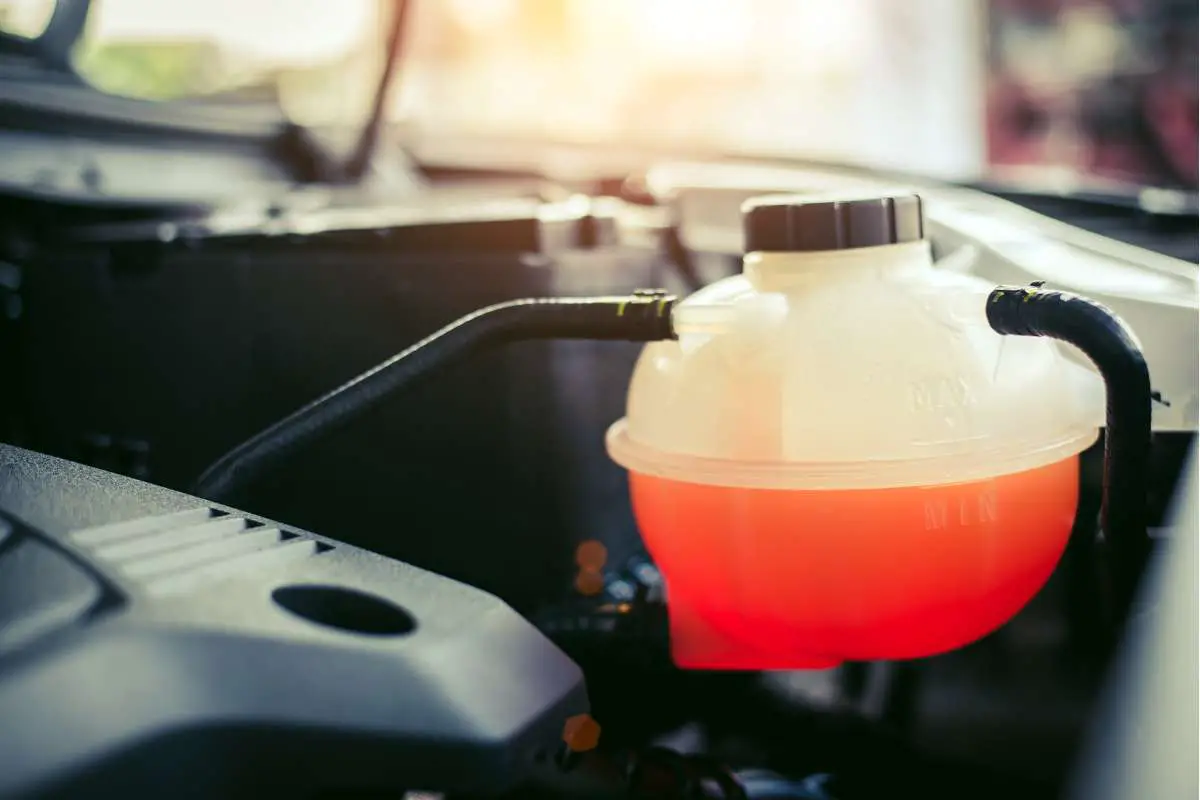You aren’t alone in pondering the mystery of your car’s rapid coolant consumption. Many car owners have reported this issue and are seeking information about it.
To prevent engine overheating and corrosion, coolant is an essential fluid. Damage to the engine and expensive repairs can result from losing coolant.
In this article, we’ll discuss the most common causes of coolant loss and how to repair your vehicle.

Why is my car using coolant so quickly?
An internal leak in your vehicle’s cooling system is likely the cause of the increased coolant consumption. A puddle of green or orange liquid under your car is a telltale sign of a coolant leak.
The radiator, hoses, water pump, thermostat, and heater core are all part of the cooling system, so the coolant must leak from one of these parts. A leak can develop if any of these components develop a crack, hole, or loose connection.
The cooling system can be visually inspected, or pressure can be applied with a pressure tester to determine the location of the leak. Any engine suspected of leaking coolant ought to be inspected and fixed immediately.
What are the common causes?
It is always a good idea to be aware of the various common causes of coolant leaks so that you know what to look for in the event that this happens to you. There are a number of common causes. Here are some of the most common causes:
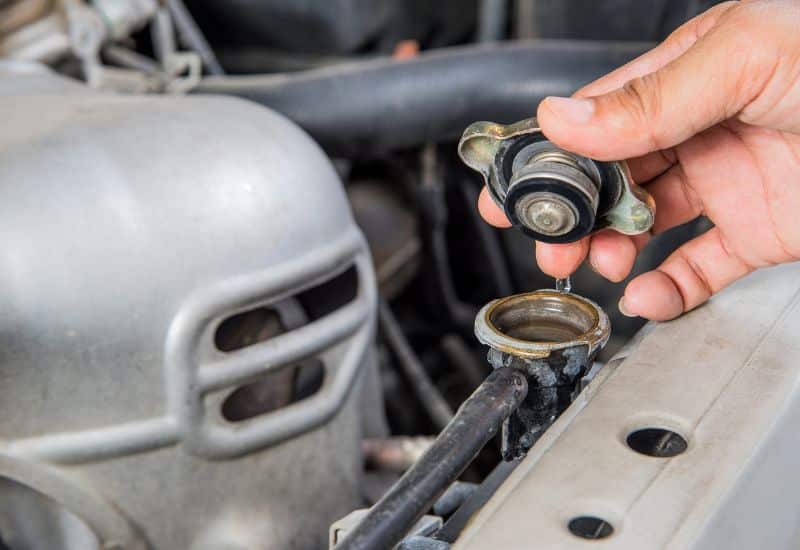
Faulty radiator cap
A leak in your car’s coolant could be caused by a faulty radiator cap. Leaks can occur, for instance, if the radiator cap isn’t doing its job and preventing coolant from escaping. Leaks in the cooling system can be caused by a number of factors, including the radiator itself becoming corroded or damaged.
The radiator cap is intended to keep the cooling system at constant pressure, preventing coolant from escaping through the overflow pipe and air pockets from forming, both of which can cause the engine to overheat. Since a leak in the coolant supply can be caused by a faulty or improperly sealed cap, it is important to inspect the radiator cap frequently and replace it if necessary.

Blown head gasket
The head gasket fills the space between the cylinder head and the engine block, sealing it so that neither coolant nor oil can leak into the engine’s combustion chambers.
When the head gasket blows, coolant leaks heavily. The coolant could get into the engine oil or even the combustion chamber if this happens. Causes of a blown head gasket include high temperatures, engine wear, and sloppy assembly.
A blown head gasket can cause white smoke to come out of the exhaust, milky oil to appear, power to decrease, and the engine to misfire. This can happen if the head gasket fails due to overheating, wear, or improper installation. Cylinder compression and combustion testing can confirm a blown head gasket.
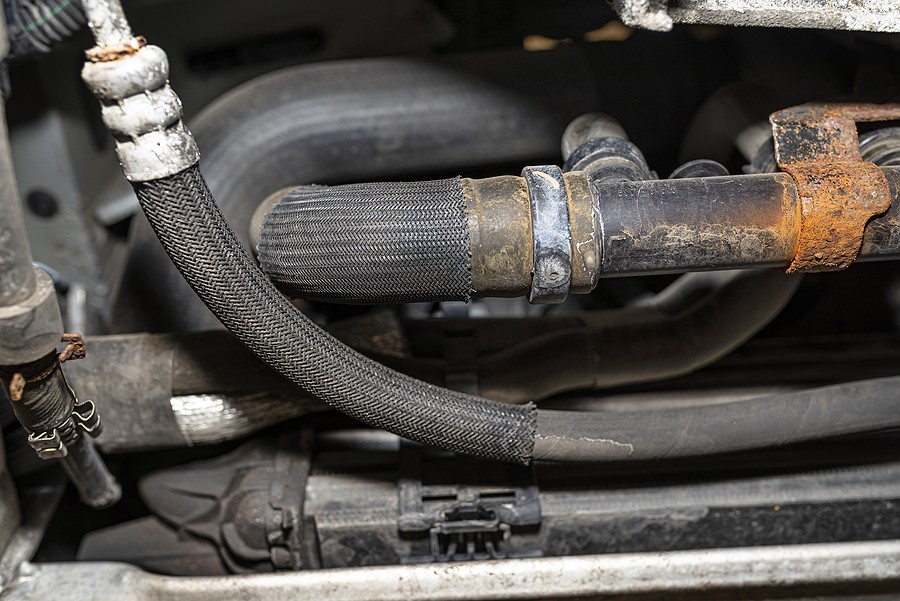
Cracked or loose hoses
Leaking coolant, white smoke from the exhaust, milky oil, diminished power, and engine misfires are all symptoms of a blown head gasket. As a result, the hoses may leak or spray coolant at their connections. High temperatures, engine wear, and careless assembly are all potential causes. Leaks in the cooling system can also be caused by hoses that are loose or cracked.
Over time, heat, vibration, and corrosion can cause the hoses that connect the radiator, water pump, heater core, and other parts of the cooling system to crack or become loose.
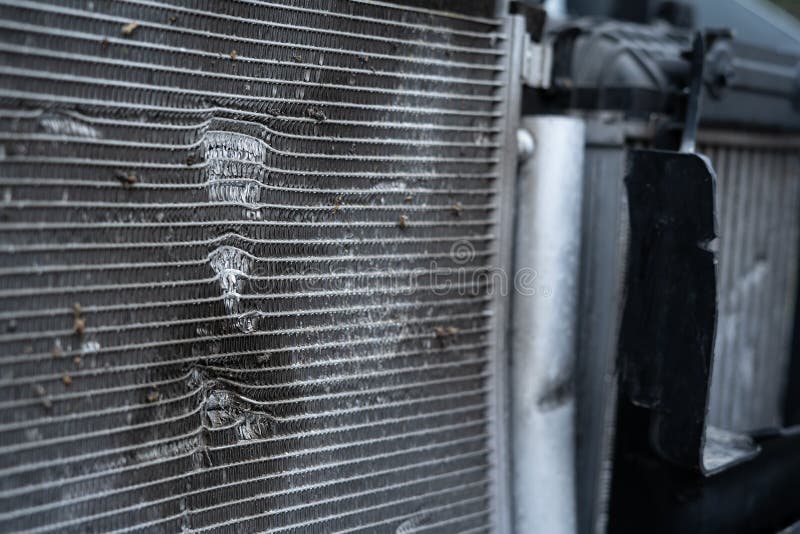
Damaged radiator
The radiator’s job is to disperse the heat of the engine’s cooling fluid, but it’s vulnerable to damage from things like debris, rust, and impact. High temperatures, engine wear, or sloppy assembly can all lead to this problem. When a radiator is damaged, a lot of coolants can quickly escape.

Faulty thermostat
A faulty thermostat is less likely but still a possible cause of your car’s rapid coolant consumption. The thermostat controls the circulation of coolant between the engine and the radiator. When the engine gets hot enough, it opens, and when it cools down, it closes again.
When the thermostat is stuck open, the engine runs cold and wastes coolant trying to keep it at the proper temperature. The engine can overheat and spill its coolant if the thermostat is stuck in the closed position. If the thermostat is functioning properly, the engine temperature gauge or the top radiator hose can be felt.
Do you add coolant while the car is running?
Car coolant should never be added to a running vehicle. Injuries from scalding liquids or steam could result.
Do not open the radiator cap to add coolant until the engine has cooled down. When the engine is warm, you can check the coolant level in the reservoir, but the radiator should not be touched. Use only the coolant recommended by your vehicle’s manufacturer.
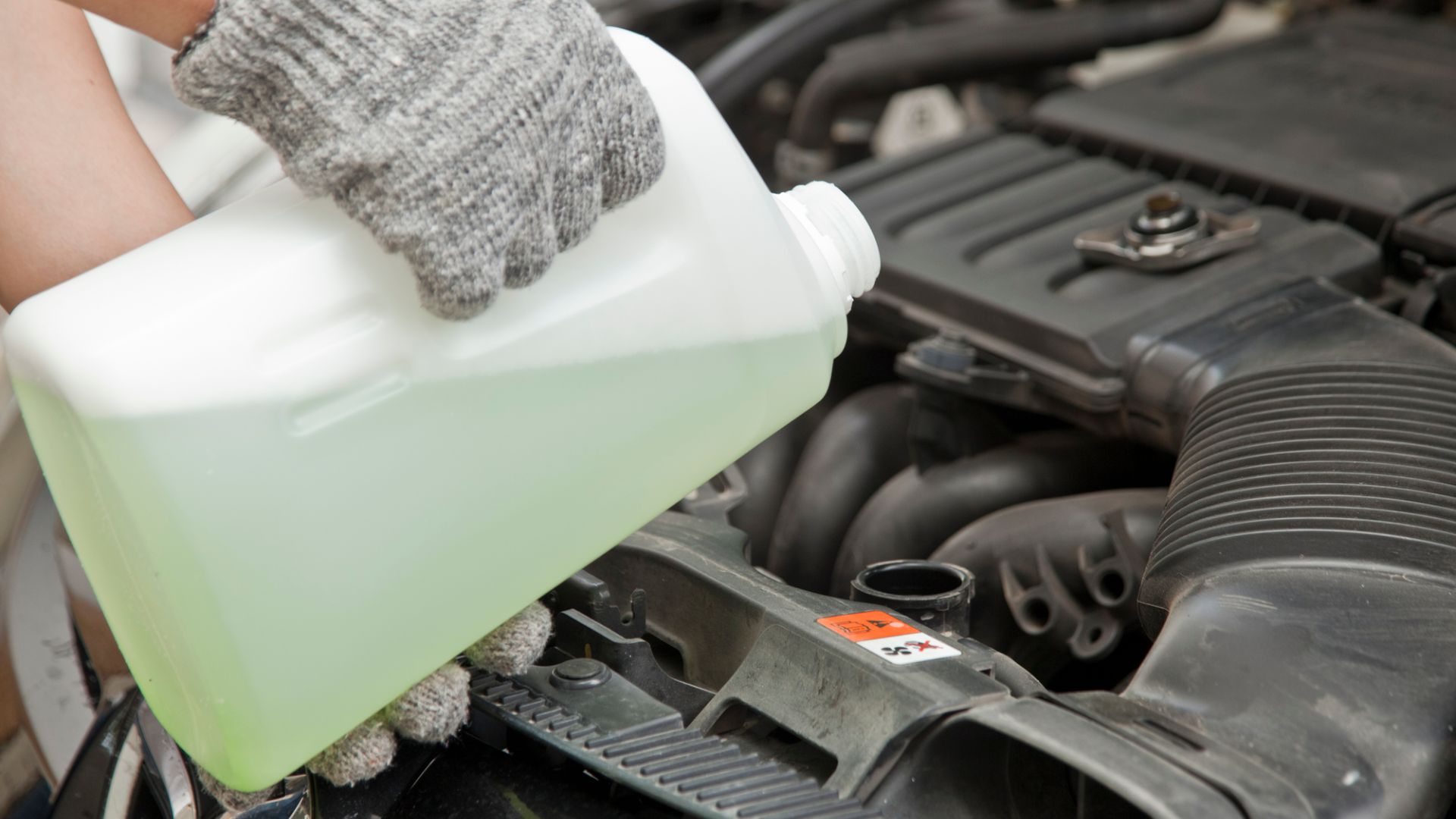
Can you add coolant to the reservoir when the car is hot?
It’s not a good idea to refill the radiator if the car is already running hot. If the reservoir cap were to come loose, the coolant, which is under great pressure, would spray out and cause severe burns.
Checking the coolant level and topping it off if necessary is best done after the engine has cooled down completely. Overheating can occur if the coolant level drops too low, so it’s important to pull over to the side of the road if this happens.
Do not touch the engine until it has cooled down, and do not open the hood. Wear protective gloves and goggles if you have to add coolant to a hot car.
To release pressure, gradually loosen the reservoir cap without completely removing it. Slowly pour in the coolant, making sure to close the lid completely after each addition.
How long should I wait to put coolant in my car after running?
Engine overheating and subsequent damage can be avoided with routine maintenance that includes adding coolant to the engine. However, you should never add coolant to a warm or running engine, as this can lead to catastrophic failure.
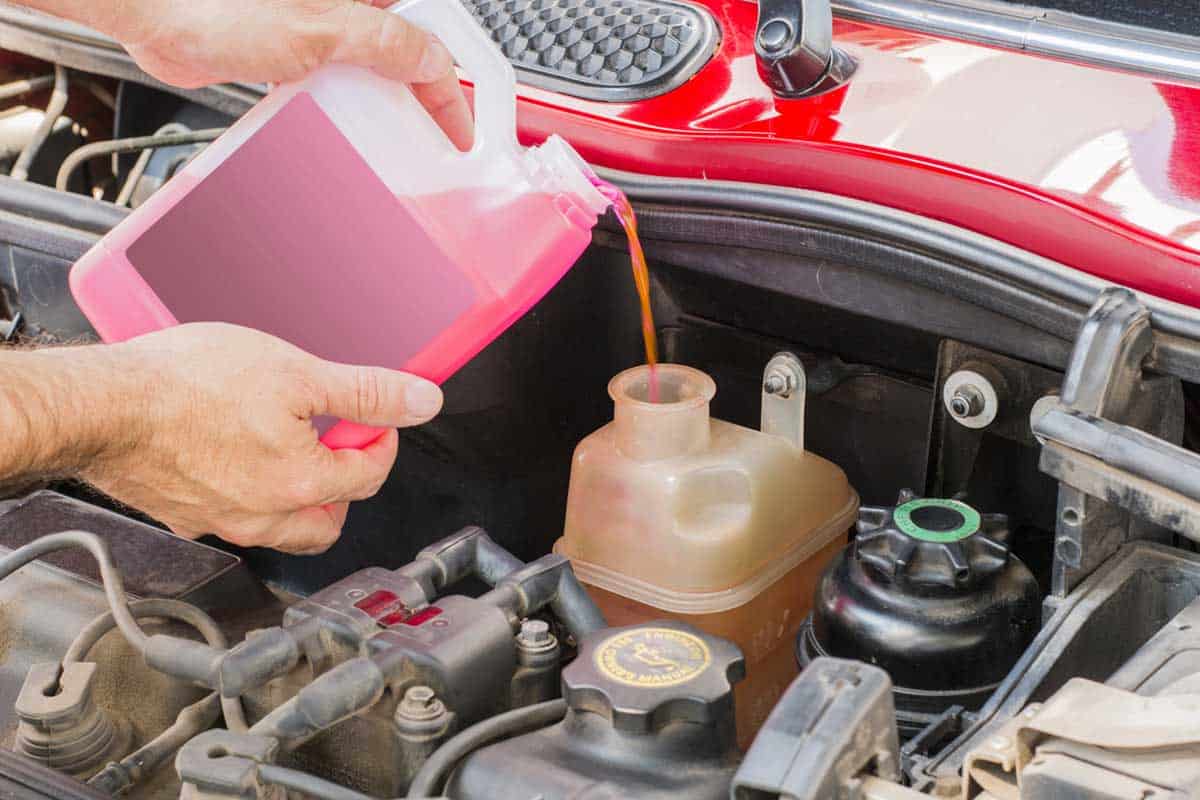
When topping off your car’s coolant, remember these steps:
- Put your car in park and switch off the ignition.
- Check the radiator cap to see if it is cool enough to touch. It’s recommended to give the engine 30 minutes to cool down.
- Find the coolant reservoir by popping the hood. It’s typically a thermometer or radiator icon on the cap of a plastic tank.
- Remove the top and examine the fluid level. Ideally, it should be somewhere in the middle of the minimum and maximum lines on the reservoir’s side.
- If your vehicle’s coolant level is low, fill it with the right kind and amount of coolant, but don’t overfill the reservoir or mix different kinds of coolant.
- Put the cap back on and secure the hood.
- The engine needs to be started and run for a few minutes. Be on the lookout for overheating or leaks.
- If everything is normal, you can continue driving normally. If not, you might want to have a mechanic take a look at it.
Conclusion
There are a number of potential causes for your car’s rapid coolant consumption. Maintaining your cooling system on a regular basis and checking for leaks and other signs of trouble is the best way to stop coolant from escaping. You should also make sure the most important maintenance is also done for your car on a regular basis.
Take your car to a qualified mechanic as soon as you detect any issues with the coolant level or performance. Ignoring a coolant leak can result in further damage and additional costs.

